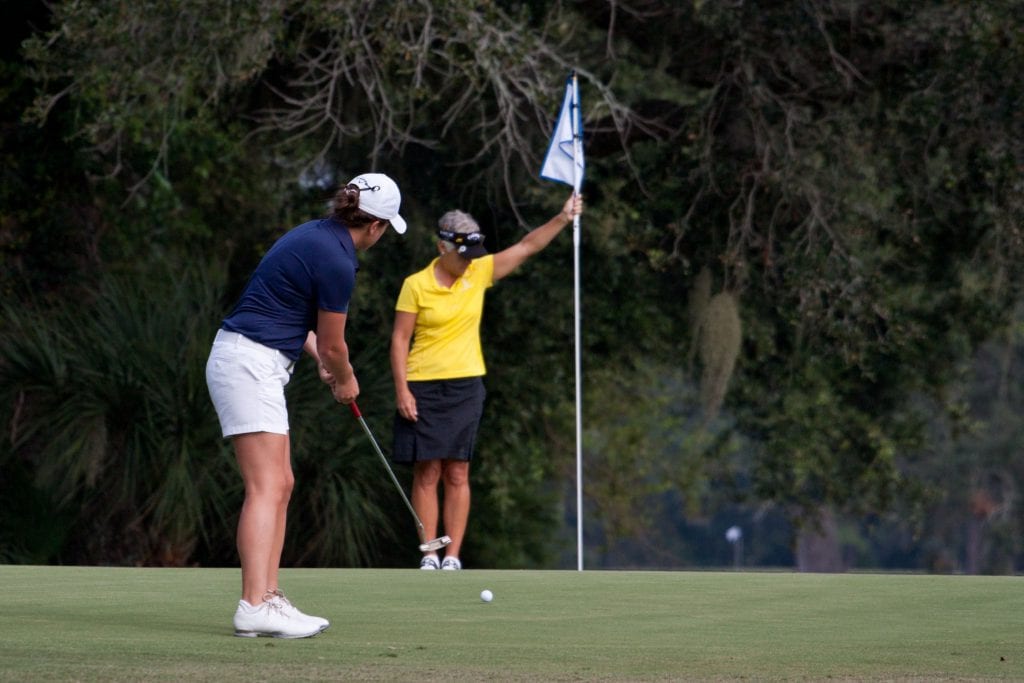Keeping track of the world’s Professional Golf Tours is a big challenge as it seems new ones come and go each year.
But if you take a count of the various professional tours that are providing playing opportunities for competitive men and women golfers at any given you will probably find no less than 40.
Each of these tours have their own unique origin, rules, and structure. And each is run by an independent organization who is responsible for creating schedules, securing tournament locations, qualifying members, arranging events, finding sponsors, establishing the entry and the purses, etc.
Most of the major golf tours have been set up to be ” player controlled”. The objectives of the PGA Tour, for example, are to:
- Maximize income and retirement benefits for their card holding members
- Pay the salaries of it’s administrators
- Making annual charitable contributions
Following are the world’s major tours, roughly in order of purses and payouts are as follows:
- PGA Tour (Total purse of $11 million for 2018)
- European Tour
- Champions Tour
- LPGA Tour
Other significant tours include:
- Web.com Tour (official developmental tour to the PGA Tour)
- Challenge Tour (official developmental tour to the European Tour)
- Future’s Tour (womens developmental tour)
- Asian Tour (tour for Asia with the exclusion of Japan)
- Japan Golf Tour
- Japan Challenge Tour (official development tour in Japan)
- Indian Golf Tour (regional tour)
- China Golf Tour (regional tour
- LPGA of Japan Tour
Men’s Pro Golf Tours
International Federation of PGA Tours
The International Federation of PGA Tours is the trade body of the main men’s professional golf tours. They discuss common issues in pro golf, and share organizing tendencies and tips with one another. As of 2007, there were six full members:
- Asian Tour (for Asia excluding Japan)
- European Tour (also visits Africa, Asia and Australasia; ranks second by prize money)
- Japan Golf Tour
- PGA Tour (based in the United States; ranks first by prize money)
- PGA Tour of Australasia (Australia and New Zealand)
- Sunshine Tour (Southern Africa – mainly South Africa)
These six tours co-sanction the Official World Golf Rankings, and world ranking points are awarded at all official money events on their calendars. The Canadian Tour and the Tour de las Americas are associate members of the Federation. [1]Canadian Tour events receive world ranking points, but as of 2007, Tour de las Americas events do not.
Now, in 2018, the international federation of PGA tours has seen a lot more movement. The follows members were added to the federation:
- China Golf Association
- Professional Golf Tour of India
- Korea Professional Golfers’ Association
Along with these three members, six major women’s tours were added to the federation as well, marking the first time that women’s golf was represented in the organization.
Other Men’s Pro Tours
World ranking points will also be awarded for golfers with good placings in events on three developmental golf tours:
- The Challenge Tour (second-tier tour to the European Tour)
- The Web.com Tour (second-tier tour to the PGA Tour)
- The Asian Development Tour (second-tier tour to Asian Tour)
The tour with the biggest purse that does not offer ranking points is the Korean Tour. Below this level, the tours do not offer ranking points, and the prize money on offer will be at a level that allows only a few of the members, or perhaps none of them at all, to make their main income from playing on that tour alone. Some of the players will also play on other tours when they are able to, and others will be club or teaching professionals who play tournament golf part time.
The official development tour in Japan is the Japan Challenge Tour. Other regional tours include the Indian Golf Tour and the China Golf Tour.
The United States and Europe have additional tours for players who haven’t made it onto the Web Tour or the Challenge Tour. At this level the prize money is partly funded by entrance fees and only the most successful players will win enough to do more than cover their expenses. The emphasis in these events is very much on moving up to a higher tour.
In Europe there is a relatively well-defined third tier of tours. These are independently operated, but offer promotion to the Challenge Tour for some of the most successful players. The three third level tours are the PGA EuroPro Tour, the Alps Tour, and the EPD Tour. Below this level there are various minor professional tournaments, some of which are organized into series by national golf associations, for example the men’s leg of the Swedish Golf Association’s “Telia Tour”, the developmental tour for Wales, Scotland and Ireland, the Celtic Pro Tour, and the Midas Tourcovering the south of England.
In the United States the lower-level tours do not offer direct promotion to the Web.com Tour, so there isn’t as well defined of a third tier. The larger regional tours include the Gateway Tour and NGA Hooters Tour and there is a constantly changing roster of small “mini-tours”.
The term “mini-tour” is not an official term and therefore is not easy to define – the larger regional tours carefully avoid applying the term to themselves, while some of the smaller tours apply it to all of tours below the Nationwide Tour level in an attempt to put themselves on the same level as their larger competitors. Either way, tours that are below Nationwide Tour-level hold little possibility of earning a living from the prize money alone and players compete to gain competitive experience. Some are employed as club or teaching professionals and play tournaments part time, while some may have sponsors or family backing.
There have also been many well-known athletes from other sports who have attempted professional golf careers after retiring from their original sport. While many have seen some success and have had fairly publicized events, none of them have made it into golf’s elite level. Examples include former NFL quarterback John Brodie, who won one tournament and had 12 top-10 finishes on that tour, along with former MLB pitcher Rich Rhoden, and Ivan Lendl.
Men’s Senior Golf Tours
Upon reaching age 50, male golfers are eligible to compete in senior golf tournaments. Golf is unique among sports in having high profile and lucrative competitions specifically meant for players of this age group. Many of the famous golfers who are eligible to compete in these events choose to do so, unless they are unable to for injury or other health reasons. A number of players win more than a million dollars in prize money each season, and once endorsements and other business activities are taken into account, a few of the “legends of golf” in this age group earn more or less as much as any of the younger PGA Tour pros, other than Tiger Woods. There have been relatively few changes to these tournaments over the past couple decades. The two main senior tours are currently:
- PGA Champions Tour
- European Seniors Tour
These tours are surprisingly well marketed, highly followed, and decently funded, offering great opportunities for aging golfers to continue to do what they love.
Women’s Pro Golf Tours
Women’s professional golf is also organized by independent, regional tours. Leading female golfers make incomes well over $1 million per year, more than almost all other female athletes (other than top tennis players, who have the same prize winnings are the men). There are currently six first-tier regional tours:
- LPGA Tour (United States)
- Ladies European Tour
- LPGA of Korea Tour
- LPGA of Japan Tour
- Ladies Asian Golf Tour, for Asia outside of Japan and Korea
- ALPG Tour (Based in Australia)
The LPGA Tour is the dominant tour, and is the main playing base of almost all the world’s leading female golfers. The LPGA of Japan Tour is the tour with the second biggest purse, and retains many of its leading players. The best players from the other pro tours usually move to the LPGA Tour at the earliest opportunity they’re allowed due to the higher prestige and prize money.

The second tier women’s professional tour in the United States is called the Symetra Tour. Although there used to be little opportunity for women’s developmental play in the United States besides the Symetra Tour and former Duramed FUTURES Tour level, women are welcome to compete against men on some mini-tours, and the Pro Women’s Victory Golf Tour will begin May 2008 going to eight cities in the eastern United States. By defining itself as complementary to the LPGA and not simply developmental to it, the Victory Golf Tour offers the second largest purses for U.S. women golfers and promises to be a needed alternative to the LPGA and Duramed FUTURES Tour. Sweden, which is the European country where women’s golf is most popular, has its own Telia Tour, which serves as a feeder tour for the Ladies European Tour. The LPGA of Korea operates two mini-tours that basically just serve as feeders for its main tour.
In 2001 the U.S. based Women’s Senior Golf Tour was founded, featuring golfers 45 and over. In 2006 it was rebranded as the Legends Tour. The LPGA of Korea now operates the Akia Tour, a four-event mini-tour for the same age group.
Of course all of this information is constantly changing and this information may be a bit out of date. We will try to update but these updates can be far between. This information should give you a good idea of what pro tours are out there.
If you’re a competitive golfer searching for a way to take the next step, check out our golf mental game coaching. Our coaching has helped with dozens of tour championships, and can help you be more consistent, practice more efficiently, analyze the situation more clearly, and master your mental game.


